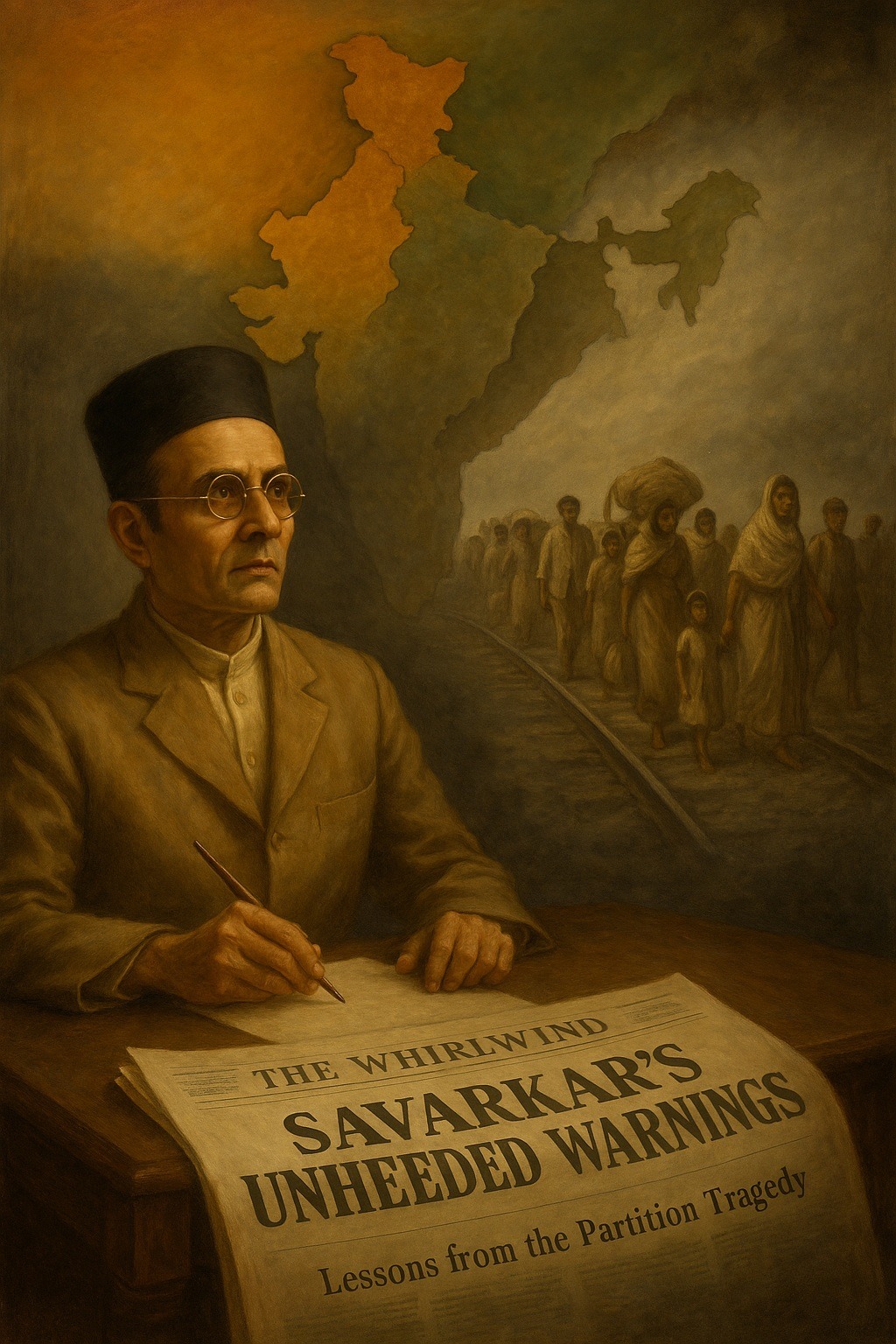Tag: Pakistan
-
When Vinayak Damodar (Veer) Savarkar reflected on what holds a nation together, he looked beyond geography or race. For him, true national unity demanded not only shared ideals but also a shared language (a Rashtrabhasha) — a medium through which those ideals could live, circulate, and bind people together. Savarkar viewed communication as the ‘lifeblood…
-
Savarkar’s Coding of Hindutva; Metacode Rashtra, Part 7; Code Territory 6/6); Codeelement Des, Indivisibility of the Territory (2/3) For Vinayak Damodar (Veer) Savarkar, Nepal was far more than a neighboring state. Within his vision of an indivisible Hindu nation, Nepal held a place of central importance. Nepal as the Core of Hindu Rashtra Savarkar saw…
-
Independence Shadowed by Tragedy The Partition of India in 1947 was more than the birth of two nations — it was one of the largest human tragedies in recorded history. While millions celebrated independence, millions more faced death, displacement, and devastation. Few foresaw the coming storm as clearly as Vinayak Damodar (Veer) Savarkar. For years,…
-
Savarkar’s Coding of Hindutva, Metacode Rashtra, Part 3; Code Territory (2/6) Vinayak Damodar Savarkar’s ideological framework for Hindutva is deeply rooted in territorial delineation, a concept that is essential for political realism while seemingly contradictory to his broader worldview. His reflections on the nature of the Indian nation and its territorial boundaries stem from a…




